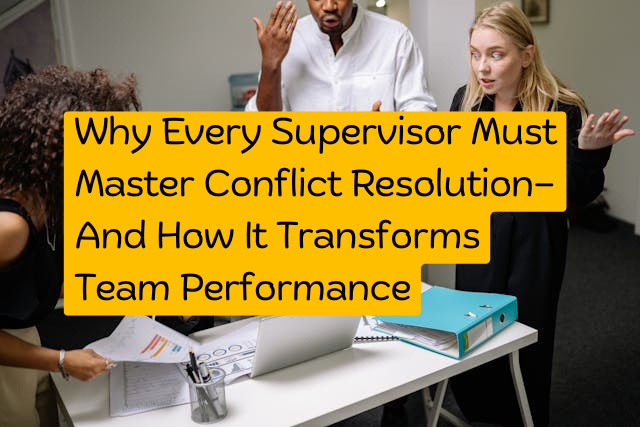Stop Putting Out Fires—Start Solving the Real Problem
We’ve all been there—looping through the same issues at work over and over again. A recurring complaint from a customer. A constant bottleneck in a process. A people problem that won’t go away.
Quick fixes feel good in the moment, but they don’t solve the core issue. What you need is a structured approach—a framework that helps you define the real problem, assess the situation fully, and arrive at a solution that lasts.
This blog walks you through the Six Step Problem Solving Method—a powerful, repeatable system used by successful teams and leaders to turn even the most complex challenges into long-term wins.
🎯 1. Step One: Clearly Define the Problem
“A problem well-defined is half-solved.”
Many teams fail at problem-solving because they’re solving the wrong problem. You can’t fix what you haven’t fully understood.
🔍 Ask:
- What exactly is happening?
- Who is affected?
- What are the symptoms—and what might be the root?
🎯 Tools to Use:
- Problem Statement Template
- 5 Whys Technique
- SIPOC Diagram (Suppliers, Inputs, Process, Outputs, Customers)
Example:
Poor problem definition: “Customer service is bad.”
Better definition: “Customer response times have exceeded 24 hours for 40% of cases over the past 3 months, causing drop in satisfaction scores.”
🔬 2. Step Two: Analyze the Situation Thoroughly
Once the problem is defined, it’s time to dig deeper.
Goals:
- Understand why the issue is happening
- Gather relevant data and stakeholder input
- Spot any patterns, trends, or gaps
🔍 Ask:
- What has already been tried?
- When and where does the problem occur most?
- Are there related processes that may be breaking down?
🔧 Tools to Use:
- Root Cause Analysis
- Fishbone (Ishikawa) Diagram
- Process Mapping
- Data Dashboards
Tip:
Bring different perspectives into the analysis. Someone in a different role may spot a cause you overlooked.
🧠 3. Step Three: Generate a Range of Possible Solutions
Don’t settle for the first idea that comes to mind. Creativity unlocks better answers—especially when you’ve fully analyzed the problem.
Brainstorming Ground Rules:
- No judgment
- Encourage wild ideas
- Build on others’ suggestions
- Go for quantity before quality
💡 Techniques:
- Brainwriting (silent brainstorming)
- SCAMPER (Substitute, Combine, Adapt, Modify, Put to another use, Eliminate, Reverse)
- “What If” Scenarios
Aim to generate 5–10 possible solutions, even if some feel unconventional.
🧮 4. Step Four: Evaluate and Select the Best Solution
Not every idea is realistic or impactful. Now it’s time to weigh the options.
Criteria to Consider:
- Feasibility
- Cost vs. Benefit
- Time to implement
- Sustainability
- Risks involved
- Stakeholder impact
✅ Tools to Use:
- Decision Matrix
- Pros/Cons List
- Cost-Benefit Analysis
- Pilot Testing Option
Involve key decision-makers early so your solution doesn’t stall at approval.
🛠️ 5. Step Five: Plan and Implement the Solution
Ideas don’t change outcomes—execution does.
Create a clear action plan:
- Who is responsible?
- What tasks are needed?
- What’s the timeline?
- How will success be measured?
🎯 Implementation Plan Should Include:
- Milestones
- Roles & responsibilities
- Resource requirements
- Communication strategy
- Risk mitigation plan
Communicate often and celebrate small wins as you roll out the solution.
📊 6. Step Six: Monitor Results and Lock in the Gains
The last (and most forgotten) step—review, measure, and refine.
Ask:
- Did the solution solve the problem?
- Are there unintended side effects?
- Do any tweaks need to be made?
Use KPIs or before/after comparisons to validate impact.
🔄 Sustain the Improvement:
- Update SOPs (Standard Operating Procedures)
- Share lessons learned across teams
- Assign ownership for maintaining the change
- Incorporate the solution into training and onboarding
📘 Real-Life Application: A Quick Case Study
Challenge:
A manufacturing company faced increasing delays in shipping due to warehouse bottlenecks.
Their Six Step Journey:
- Defined the problem: 20% of orders delayed by 2+ days in the last quarter.
- Analyzed the situation: Discovered the delay occurred mostly during inventory restocking hours.
- Brainstormed solutions: Considered automation, new shift schedules, inventory layout changes.
- Evaluated options: Selected staggered shift schedules and new bin labeling system.
- Implemented: Rolled out in 2 weeks with team training.
- Monitored: Delays dropped from 20% to 3% in 60 days.
Result: Faster shipping, happier customers, and a repeatable problem-solving culture.
🧭 Bonus: Six Step Problem Solving Checklist
✅ Clearly define the problem
✅ Analyze the current situation
✅ Brainstorm multiple possible solutions
✅ Evaluate and select the most feasible option
✅ Plan and implement the chosen solution
✅ Monitor, measure, and maintain the improvement
🚀 Why This Method Works
This Six Step Framework isn’t just logical—it’s empowering. It:
- Builds structured thinking into your team
- Drives collaborative problem-solving
- Prevents recurring issues
- Promotes data-driven decisions over emotional reactions
- Creates a culture of continuous improvement
Whether you’re a manager, team lead, or frontline problem solver—this method helps you stop reacting and start resolving.
✅ Conclusion: Turn Challenges Into Opportunities With the Six Step Method
The problems your organization faces won’t go away on their own. But with the right approach, you can go beyond quick fixes—and find innovative, lasting solutions that truly move the needle.
The Six Step Problem Solving Method gives your team a repeatable playbook to solve issues systematically, creatively, and permanently.
Use it. Teach it. Embed it into your culture.
Because the best teams don’t just work around problems—they solve them for good.



